NAVYPEDIA
 Support the project with paypal
Support the project with paypal
Ships
| Name | No | Yard No | Builder | Laid down | Launched | Comp | Fate |
|---|---|---|---|---|---|---|---|
| E1 (ex-D9) | I81 | Chatham DYd | 2.1911 | 9.11.1912 | 5.1913 | scuttled 8.4.1918 | |
| E2 (ex-D10) | I82 | Chatham DYd | 2.1911 | 23.11.1912 | 6.1913 | sold 3.1921 | |
| E3 | I83 | Vickers, Barrow | 4.1911 | 29.10.1912 | 5.1914 | sunk 18.10.1914 | |
| E4 | I84 | Vickers, Barrow | 5.1911 | 5.2.1912 | 1.1913 | sold 2.1922 | |
| E5 | I85 | Vickers, Barrow | 6.1911 | 17.5.1912 | 6.1913 | lost 7.3.1916 | |
| E6 | I86 | Vickers, Barrow | 9.1911 | 12.11.1912 | 10.1913 | sunk 26.12.1915 | |
| E7 | I87 | Chatham DYd | 3.1912 | 2.10.1913 | 3.1914 | sunk 5.9.1915 | |
| E8 | I88 | Chatham DYd | 3.1912 | 30.10.1913 | 6.1914 | scuttled 8.4.1918 | |
| AE1 (RAN) | 1 | Vickers, Barrow | 1912 | 18.6.1913 | 2.1914 | lost 14.9.1914 | |
| AE2 (RAN) | 2 | Vickers, Barrow | 1912 | 22.5.1913 | 2.1914 | scuttled 30.4.1915 |
Technical data
| Displacement standard, t | |
|---|---|
| Displacement normal, t | 655 / 796 |
| Length, m | 54.2 |
| Breadth, m | 6.92 |
| Draught, m | 3.83 |
| No of shafts | 2 |
| Machinery | 2 8-cyl Vickers diesels / 2 electric motors |
| Power, h. p. | 1600 / 840 |
| Max speed, kts | 15 / 9 |
| Fuel, t | diesel oil |
| Endurance, nm(kts) | 3000(10) / |
| Armament | E1 - 3, 5 - 8, AE1, 2: 4 - 450 TT (1 bow, 2 beam, 1 stern, 8) E4: 1 x 1 - 76/28 12pdr 8cwt QF Mk I, 4 - 450 TT (1 bow, 2 beam, 1 stern, 8) |
| Complement | 30 |
| Diving depth operational, m | 30 |
Project history
For the 1910-11 Programme the Admiralty ordered six enlarged and improved versions of the 'D's. There was link fundamental change for the 'D' class had proved most successful, but in response to requests from the Submarine Service the hull was enlarged to accommodate a pair of beam TT. It was felt that long-range attacks with bow tubes were not sufficiently accurate, whereas beam tubes permitted more accurate short-range shooting. For that reason the 'E' class were to be given single bow and stern tubes, and a pair of tubes amidships, firing p&s. The diesels were the standard Vickers 4-stroke type but E3 was given 2-stroke Card diesels of Belgian manufacture. They were not successful, and after trials they were replaced by the standard type. An important innovation was the provision for the first time of two watertight bulkheads. When war broke out in August 1914 two boats of the 1911-12 Programme, E7 and E8, were ordered to be built to the E1 design, rather than to the 'Improved E' design which was to follow. The design proved highly successful, and production continued right through to 1917. With their later successors they bore the brunt of the Allies' submarine offensive, losing nearly 50% and scoring some of the outstanding successes of the war in the Sea of Marmora and the Baltic.
Modernizations
1915, E4, E6: + 1 x 1 - 57/40 6pdr Hotchkiss Mk I
1915, E2: + 1 x 1 - 102/40 BL Mk VIII
Naval service
E1 was sent to Baltic in October 1914 and was scuttled 8.4.1918 off Helsingfors to avoid capture. E3 was torpedoed 18.10.1914 in the North Sea by German submarine U27. E4 was sunk in collision with E41 on 15 August 1916, but although raised was apparently never re-commissioned. E5 was lost 7.3.3916 in the North Sea by unknown cause. E6 was mined 26.12.1915 in the North Sea. E7 was trapped in anti-submarine nets in the Dardanelles and then destroyed 5.9.1915 by explosive charge from German submarine UB14. E8 went to the Baltic and was scuttled off Helsingfors 8.4.1918. AE1 was lost 14.9.1914 from unknown cause (probably struck underwater obstruction) off Bismarck Archipelago. AE2 was sent to the Mediterranean in March 1915 and had to be scuttled in Sea of Marmora 30.4.1915 after sustaining severe damage from Turkish torpedo-boat Sultan Hissar.
 HOME
HOME FIGHTING SHIPS OF THE WORLD
FIGHTING SHIPS OF THE WORLD UNITED KINGDOM
UNITED KINGDOM SUBMARINES
SUBMARINES "E" submarines (E1 group) (E1) (10, 1913 - 1914)
"E" submarines (E1 group) (E1) (10, 1913 - 1914)
